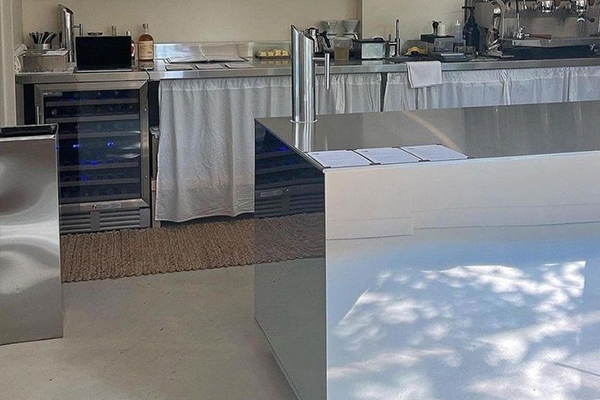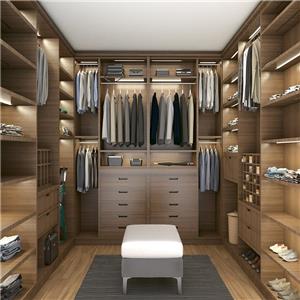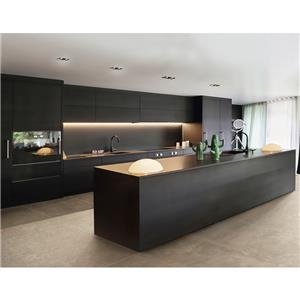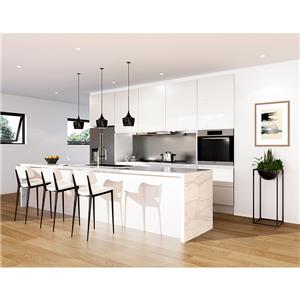Metal Kitchen Cabinets: Cleaning, Painting, and Their Benefits
I. Introduction
Metal kitchen cabinets have gained renewed popularity due to their fusion of vintage allure and modern practicality. Durable and adaptable, they seamlessly fit diverse design schemes, from minimalist contemporary to retro-inspired styles, thanks to a variety of finishes and colors. Their robust nature resists wear, moisture, and pests, enhancing longevity and hygiene in culinary spaces. Furthermore, metal cabinets' sustainability, being recyclable and often fabricated from recycled materials, appeals to eco-conscious consumers. Customizable designs and modular systems cater to individual storage needs, enhancing functionality without compromising aesthetics, thereby solidifying their status as a versatile and trendy choice in kitchen interiors.
Importance of maintenance for longevity and aesthetics
Proper maintenance is crucial for preserving both the longevity and aesthetics of any home feature, particularly in kitchen cabinets. Regular care prevents deterioration from daily wear, humidity, and spills, ensuring cabinets retain their structural integrity and appearance. Cleaning with mild cleansers removes grime and stains, preventing buildup that could damage surfaces. Promptly addressing scratches or dents not only sustains visual appeal but also prevents further damage. Periodic inspections help identify and resolve minor issues before they escalate. Well-maintained cabinets contribute to a cleaner, more inviting kitchen environment and can significantly extend the time between renovations, ultimately saving money and preserving the value and beauty of your living space. Regular upkeep transforms a routine task into an investment in the lasting quality and elegance of your home.
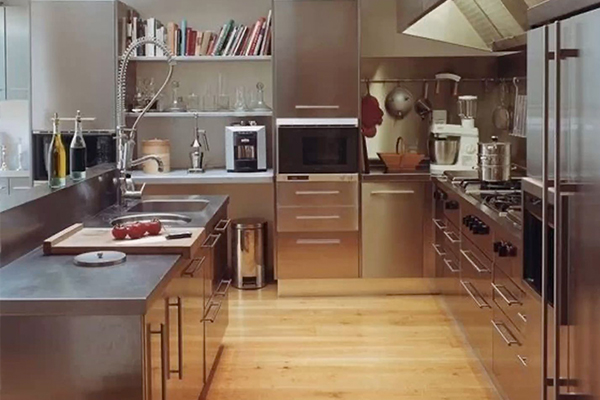
II. How to Clean Metal Handles on Kitchen Cabinets
- Step-by-step guide:
1. Preparing for effective cabinet care begins with gathering the right supplies. Ensure you have a gentle, pH-neutral liquid soap to avoid damaging the cabinet finish. Lukewarm water is essential for diluting the soap and rinsing away residue. A soft microfiber cloth is indispensable for its gentle yet effective cleaning action, preserving the cabinet's surface. For more obstinate stains, have a non-abrasive cleaner on hand; it's powerful enough to tackle tough spots without scratching the metal. With these basics, you're equipped to maintain your metal kitchen cabinets with ease, keeping them clean and lustrous.
2. To begin the cleaning process, fill a basin or sink with lukewarm water and add a small amount of mild soap, swirling to create a gentle suds. Submerge a clean, soft cloth into this soapy mixture until it’s adequately dampened but not dripping wet. This damp cloth will serve as your primary cleaning tool, effectively lifting away grime and fingerprints from your metal kitchen cabinets without leaving streaks or harming the finish. Remember, a light touch and consistent motion across the surface will yield the best results, preserving the cabinets' shine and cleanliness.
3. With your soapy, damp cloth in hand, approach each cabinet handle with care. Use a delicate touch to glide over every surface, carefully navigating around corners, grooves, and any intricate designs. These crevices often harbor dirt and grime, so pay extra attention to these areas to ensure thorough cleaning. Work systematically, moving from one handle to the next to maintain an organized and efficient process. This meticulous wiping not only cleans but also polishes the handles, restoring their original luster and ensuring a hygienic environment in your kitchen.
4. After completing the initial soapy wipe down, it's crucial to rinse your cloth thoroughly under running water to eliminate all soap remnants. Squeeze out excess water, ensuring the cloth is damp but not soaking wet. Then, revisit each cabinet handle, using this clean cloth to wipe away any leftover soap film. This step is pivotal as residual soap can leave unsightly streaks or attract dust over time. Gentle, repeated wiping ensures a spotless finish, revealing the true shine of your metal handles and preventing potential water spotting or residue buildup. It's a simple act that significantly enhances the final result of your cleaning efforts.
5. Once you've wiped away soap residue, grab a fresh, dry microfiber cloth to complete the drying process. Methodically go over each handle, delicately buffing until they are entirely free of moisture. This step is critical because lingering water droplets can evaporate and leave behind unappealing water spots, which can be challenging to remove later. Thorough drying also aids in maintaining the pristine appearance and longevity of the metal finish. By taking the time to dry meticulously, you're investing in the ongoing beauty and hygiene of your kitchen cabinets, ensuring they continue to sparkle and look as good as new.
6. When confronted with stubborn stains or ingrained grime that doesn't yield to mild soap and water, it's time to employ a non-abrasive cleaner. Carefully read and adhere to the product's instructions for best results and safety. Apply the cleaner directly onto the affected area, typically with a soft brush or cloth, and allow it to sit for the recommended time to dissolve the buildup. Gently agitate if necessary, always being cautious not to scratch the metal surface. Afterwards, wipe clean with a damp cloth and dry thoroughly. Using such targeted cleaners judiciously can effectively restore your metal kitchen cabinets to their original brilliance without causing harm.
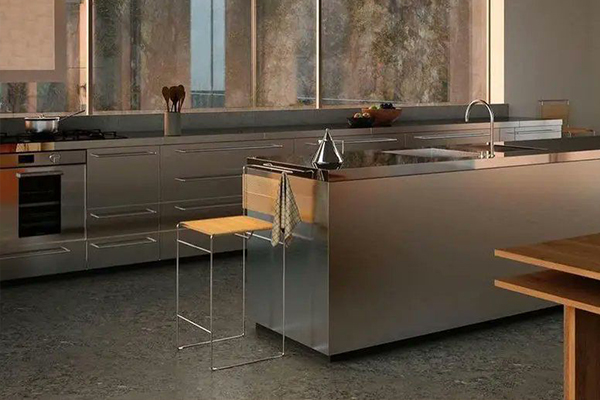
- Tips for regular maintenance and preventing damage
Regular maintenance for kitchen cabinets includes dusting weekly with a microfiber cloth to prevent particle buildup and using a mild detergent solution for monthly deep cleans. Promptly wipe spills to avoid moisture absorption and staining. To prevent scratches, use cutting boards and trivets under hot dishes. Adjust hinges and knobs regularly to maintain alignment and ease of use. Apply furniture wax or a specialized cabinet cream annually to protect finishes. Avoid abrasive cleaners and harsh chemicals that can damage surfaces. Regularly inspect for signs of wear or water damage and address promptly. By adopting these practices, you'll not only protect your cabinets from everyday harm but also prolong their lifespan and keep them looking as good as new.
III. How to Paint Metal Kitchen Cabinets
- Preparing for the task:
1. For a comprehensive cleaning or painting project, start by removing cabinet doors and detaching all hardware such as handles and hinges. This step allows for unhindered access to all surfaces, ensuring a thorough job. Use a screwdriver appropriate for the hardware to avoid stripping screws, and place removed pieces in a labeled container to keep them organized and safe. Cover work surfaces to protect against scratches or drips, and lay out cabinet components in a clean, well-ventilated area. Proper disassembly sets the stage for efficient and effective restoration or maintenance tasks.
2. Before proceeding with painting or deep cleaning, it's crucial to eliminate grease and grime buildup, especially in a kitchen environment. Apply a generous amount of degreaser to the surfaces of the removed cabinet doors and frames, focusing on areas around the handles and edges where grease tends to accumulate. Let the degreaser sit for the recommended time to break down stubborn oils. Then, using a non-abrasive sponge or brush, scrub gently to lift away dirt, rinsing frequently in clean water. Dry everything thoroughly with a clean towel afterwards to set the stage for a smooth painting process, or just enjoy a fresh, clean cabinet surface.
3. To achieve optimal paint adhesion on metal cabinets, light sanding is imperative. Utilize a fine-grit sandpaper or sanding block to gently abrade the surfaces, focusing on areas that will be painted. This process etches the otherwise smooth metal, creating micro-abrasions that enhance the paint's grip. Sand in straight, even strokes, following the grain pattern for a uniform texture. After sanding, wipe away dust with a tack cloth to remove all particles, ensuring a clean, debris-free surface ready for priming and painting. Proper sanding is a critical preparatory step that directly influences the longevity and finish quality of your paint job.
4. Applying a primer designed explicitly for metal surfaces is a fundamental step to ensure paint adheres well and prevents corrosion. Choose a rust-inhibiting primer and apply it evenly using a foam roller or brush, following the manufacturer's instructions regarding drying times. This base layer not only improves paint adhesion but also seals the metal, creating a barrier against moisture that could cause rust. Pay careful attention to coverage, ensuring all areas are evenly coated, including edges and corners. Proper priming sets the foundation for a professional-looking, long-lasting paint finish on your metal kitchen cabinets.
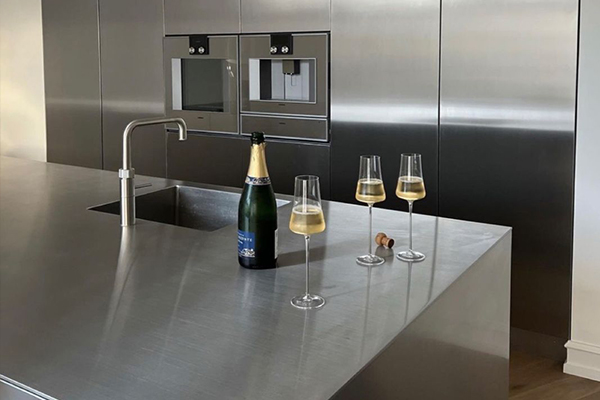
- Painting process:
1. Selecting the right paint for metal kitchen cabinets is paramount for both aesthetics and durability. Oil-based paints offer excellent adhesion, hardness, and moisture resistance, making them ideal for high-moisture environments like kitchens. Alternatively, advanced latex paints formulated for metal surfaces provide a low-VOC option with easier cleanup and quicker drying times. Consider factors like sheen preference (satin or semi-gloss for easy cleaning), color retention, and previous paint type compatibility. Always opt for a high-quality paint that promises durability and is specifically labeled for use on metal to ensure a beautiful, long-lasting finish.
2. Begin the painting process by applying a thin, even first coat using a foam roller for large, flat surfaces to minimize brush marks and ensure a smooth finish. For cabinets, a spray gun can also be employed for an ultra-smooth application, though proper ventilation and masking off surrounding areas are crucial. After rolling or spraying, switch to a fine-bristle brush to reach corners, edges, and detailed areas, ensuring comprehensive coverage. Allow the first coat to dry completely as per manufacturer's guidelines before assessing for any needed touch-ups or proceeding with additional coats for richer color and depth. Patience and precision during this step are vital for a flawless outcome.
3. Allowing sufficient drying time between paint coats is crucial to achieving a professional and durable finish on your metal kitchen cabinets. Rushing this process can lead to poor adhesion, streaking, or even peeling. Refer to the paint manufacturer's instructions for the recommended drying or curing time, which can range from hours to overnight depending on factors like humidity and temperature. Resist the temptation to recoat too soon; instead, use this downtime to clean tools and prepare for the next step. Adequate curing ensures each layer bonds correctly with the next, resulting in a hard-wearing, attractive surface that will withstand the demands of a busy kitchen.
4. After the initial coat has thoroughly dried, assess the coverage and uniformity. Often, metal cabinets will require a second or even third coat of paint to achieve full, even coverage and rich color saturation. Apply subsequent coats following the same method as the first—using a roller or spray gun for large areas and a brush for detailed work. Each additional layer should be applied with care, maintaining light, even strokes to prevent runs or drips. Allowing each coat to dry completely before applying the next ensures a smooth, professional-looking finish that will beautify your kitchen and stand up to daily use. Patience during this step is key to a flawless result.
5. With the final coat of paint fully cured, it's time to reassemble your kitchen cabinets. Begin by attaching the hardware—handles, hinges, and any other components—ensuring they are securely fastened and aligned properly. Use a screwdriver to carefully tighten screws without over-tightening, which could strip the threads or damage the metal. Next, reinstall the cabinet doors, aligning them with care to ensure a seamless fit and smooth operation. Adjust hinges if necessary for a level and plumb appearance. This step completes the transformation, revealing your freshly painted and rejuvenated metal kitchen cabinets, ready to elevate the look and functionality of your kitchen space.
- Finishing touches and protecting the new paint job
To protect your newly painted metal kitchen cabinets and add the final polish, consider applying a clear topcoat sealer. This step enhances durability, providing a barrier against scratches, moisture, and everyday wear. Look for a sealer compatible with your chosen paint type, and apply it following the manufacturer's instructions. Lightly sand any imperfections with ultra-fine grit sandpaper between coats if necessary. Lastly, replace any protective pads or bumpers on cabinet doors to prevent scratches during use. With these finishing touches, your cabinets will not only look refreshed but also stand the test of time, maintaining their vibrant appearance and contributing to a kitchen that shines with both style and functionality.

IV. Are Metal Kitchen Cabinets Good?
- 1. Metal kitchen cabinets excel in durability and strength compared to many other common cabinet materials. Wood, while aesthetically versatile, can warp, crack, or expand with changes in humidity. Particleboard and MDF, cost-effective alternatives, are susceptible to water damage and don't withstand heavy loads as well. Conversely, metal cabinets, particularly those made from steel or aluminum, resist warping, denting, and moisture, making them highly durable. Their inherent strength supports heavy countertops and appliances without risk of structural compromise. This resilience ensures a long lifespan and reduced maintenance, making metal a smart choice for busy kitchens that demand both style and endurance.
- 2.Metal kitchen cabinets offer unparalleled resistance to moisture, pests, and fire compared to traditional wooden cabinets. Moisture, a common enemy of wood that can lead to swelling, warping, and mold growth, is effectively repelled by metal surfaces, ensuring a hygienic and long-lasting kitchen environment. Pests like termites, ants, and rodents that can infiltrate and damage wooden structures find no hospitable habitat in metal cabinets, significantly reducing the risk of infestations. Moreover, metal's inherent fire-resistant properties provide an added layer of safety, slowing the spread of flames in the unlikely event of a kitchen fire. These qualities make metal cabinets a secure and low-maintenance choice for modern homes.
- 3.Metal kitchen cabinets showcase exceptional versatility in design and color options, transcending traditional limitations. Available in a spectrum of hues, from classic stainless steel and sleek black to vibrant colors that can be powder-coated to match any decor scheme, they cater to diverse aesthetic preferences. Design-wise, metal cabinets offer sleek, minimalistic profiles for contemporary settings, as well as retro-inspired designs that evoke mid-century charm. Modular systems further enhance flexibility, enabling customization of layout and storage configurations to suit individual needs. This combination of style and adaptability positions metal cabinets as a favorite among homeowners seeking a unique, functional, and fashionable kitchen upgrade.
- 4.One of the standout features of metal kitchen cabinets is their ease of cleaning and maintenance. Unlike porous materials prone to staining, metal surfaces can be quickly wiped clean with a damp cloth and mild detergent, efficiently dealing with spills and splatters that are commonplace in culinary spaces. There's no need for harsh chemicals or special treatments; their smooth, non-porous nature resists bacteria and grime buildup, promoting a hygienic cooking environment. This low-maintenance characteristic not only saves time and effort but also contributes to the longevity of the cabinets, as they retain their like-new appearance with minimal care. For busy households or those who prioritize simplicity, metal cabinets are a practical and time-saving solution.
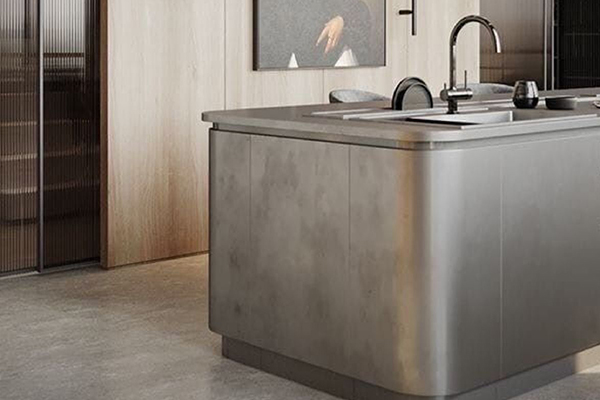
- 5.Metal kitchen cabinets are renowned for their longevity, offering a sustainable choice for discerning homeowners. Constructed from robust materials like steel or aluminum, they endure years of daily use without showing signs of wear, unlike materials prone to degradation over time. This extended lifespan reduces the need for frequent replacements, thereby minimizing waste and environmental impact. Moreover, metal cabinets are often made from recycled materials and are fully recyclable at the end of their useful life, contributing to a closed-loop system. By investing in metal cabinets, homeowners make a choice that aligns with sustainability goals, combining style and functionality with responsible resource management.
- 6.While metal kitchen cabinets may initially carry a higher upfront cost than some other materials, their long-term cost-effectiveness shines brightly. Their unmatched durability and low maintenance requirements translate into savings over the years, as there's no need for frequent repairs or replacements. Additionally, their resistance to wear and tear means they retain their aesthetic appeal and functional integrity for extended periods, preserving your kitchen's resale value. When factoring in the environmental benefits and potential reduction in energy consumption due to reflective surfaces that can bounce light and reduce the need for artificial lighting, the lifetime value of metal cabinets becomes evident, making them a wise and economical choice for homeowners.
- 7.Despite their resilience, metal kitchen cabinets have potential downsides to consider. They can be susceptible to dents and scratches, which may be more noticeable than on wooden cabinets. Furthermore, their conductive nature means they can feel cold to the touch, especially in cooler climates, affecting comfort. Rust is another concern, particularly with non-stainless steel options, requiring careful moisture management. Aesthetically, metal cabinets may not align with all design preferences, potentially limiting style choices. Lastly, noise can be an issue; they tend to be louder than wooden cabinets when opened or closed. Careful planning and appropriate finishing can mitigate many of these concerns.
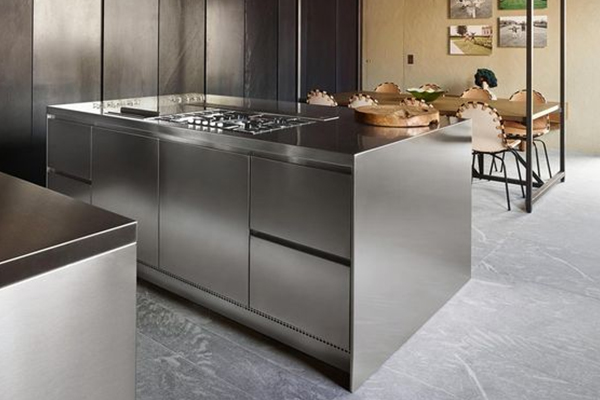
V. Conclusion
- 1.Metal kitchen cabinets boast a myriad of advantages, making them a popular choice among homeowners. Their durability stands out, resisting scratches, moisture, and wear, ensuring longevity. The material's innate strength supports heavy countertops without bending or warping. Aesthetically, metal cabinets offer a sleek, modern look fitting various design themes, from industrial minimalism to retro charm, with customizable colors and finishes. They're easy to clean and maintain, promoting hygiene in a high-use area. Furthermore, metal is a sustainable option, being recyclable and often made from recycled materials. With modular designs catering to personalized storage needs, metal cabinets combine style, functionality, and environmental consciousness, enhancing any kitchen's appeal and practicality.
- 2.Proper cleaning and occasional updates are vital to maximizing the appeal and lifespan of metal kitchen cabinets. Routine cleaning with gentle products prevents dirt accumulation and preserves the finish, while periodic deep cleans remove stubborn stains. Regular maintenance also helps identify and address minor issues before they escalate. Painting or refinishing, when done properly, can refresh the cabinets' appearance, adapting to evolving decor trends or covering signs of age. This not only rejuvenates the aesthetic but also adds a protective layer, extending the cabinets' life cycle. By committing to these practices, homeowners can transform their kitchen space, maintaining a fresh and stylish look while safeguarding their investment in quality cabinetry for years to come.
- 3.Embrace the future of kitchen design with metal cabinets – a harmonious blend of style and practicality. Their sleek, modern lines effortlessly complement contemporary aesthetics, while their robustness promises enduring functionality. Unlike traditional materials, metals offer unique textures and finishes, from glossy stainless steel to brushed copper, infusing personality into your culinary space. Withstanding daily wear, heat, and humidity, they ensure a hygienic cooking environment that's easy to maintain. Moreover, their recyclability aligns with eco-conscious lifestyles. Don't shy away from innovation; metal cabinets invite you to envision a kitchen that's not just beautiful but smart, sustainable, and built to last. Make a statement in your home; choose metal for a kitchen that reflects your lifestyle and values.
